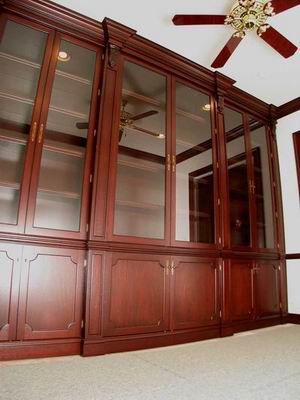Question
My shop is in my backyard and a neighbor complained about the smell of the precat that I use. Therefore, I plan to switch to waterborne products (Enduro poly) and to build a 12' x 16' spray booth.
I plan to have a filtered intake opening high on one wall and a filtered exhaust opening on the opposite wall. How large of an exhaust fan do I need? Does anyone have a reference to how much air needs to be moved based on square footage?
Forum Responses
(Finishing Forum)
From contributor G:
I think (from previous messages) that you need a minimum of 35 cfm per sq. ft. of filter. Since most spraying is done at table top height, I would consider locating the exhaust fan lower down so that the main airflow is at work height... also, you want to draw the spray downward onto your work and not up and away from it... but this might require some ducting, which can be expensive.
Your neighbors won't complain with the Enduro (or probably any water-based lacquer)... I did exactly what you are planning about 6 months ago. There is very little smell. I have 8' by 4' wide main filter area, with a 4' by 8' high plywood flap on each side that opens to make a funnel effect. So the opening to the booth is 12' wide by 8' high.
I had an old explosion-proof motor which was used for the fan, and it worked fine for the smaller pieces or anything that fits in front of the filter area. When spraying something 8 or 10 feet wide, I'm not generating enough airflow to really capture the overspray effectively, so I think I will add a second fan for these situations.
My understanding (beware a faulty memory) is that OSHA requires something like 100cfm of air blowing past you as you spray. ie; if you don't feel a breeze, you don't have enough air movement.
By the way, I use Enduro and like it very much. It's a good choice for WB.
Or at 150FPM, 12000CFM. Does not matter how long the booth is, just keep the cross section down.
To size the filter bank depends on how often you want to change filters. Anywhere from 100FPM to 300FPM will work. You will need inlet and exhaust filters of this size. (24 x 24 filter frames are bolted together to get the size you need.)
W.W. Grainger has a good fan selection for spray booths. Select a fan with the CFM rating you want at about .75" static minimum in the middle of the fan chart range. If you get the right fan (one with the motor out of the air stream), you will only need a TEFC motor, not explosion proof.
When you say, "If you get the right fan (one with the motor out of the air stream)...", do you mean that the motor would be on the outside of the booth or in a housing inside the booth?
The fans used for this are called tube axial fans (I think) in the Grainger book. They are round fan housings, belt driven and the motor is bolted to the outside with the belt running inside a tube to the fan shaft. They have sizes from 12" dia up to 54" dia with several motor choices for each size depending on the CFM needed. Each dia fan should have what is called a fan curve chart showing the CFM, motor HP and static pressure that the fan will handle. You want to select a fan where the CFM listed is about 2/3 the way up the effective chart area. This will give you some adjustment room either way.
